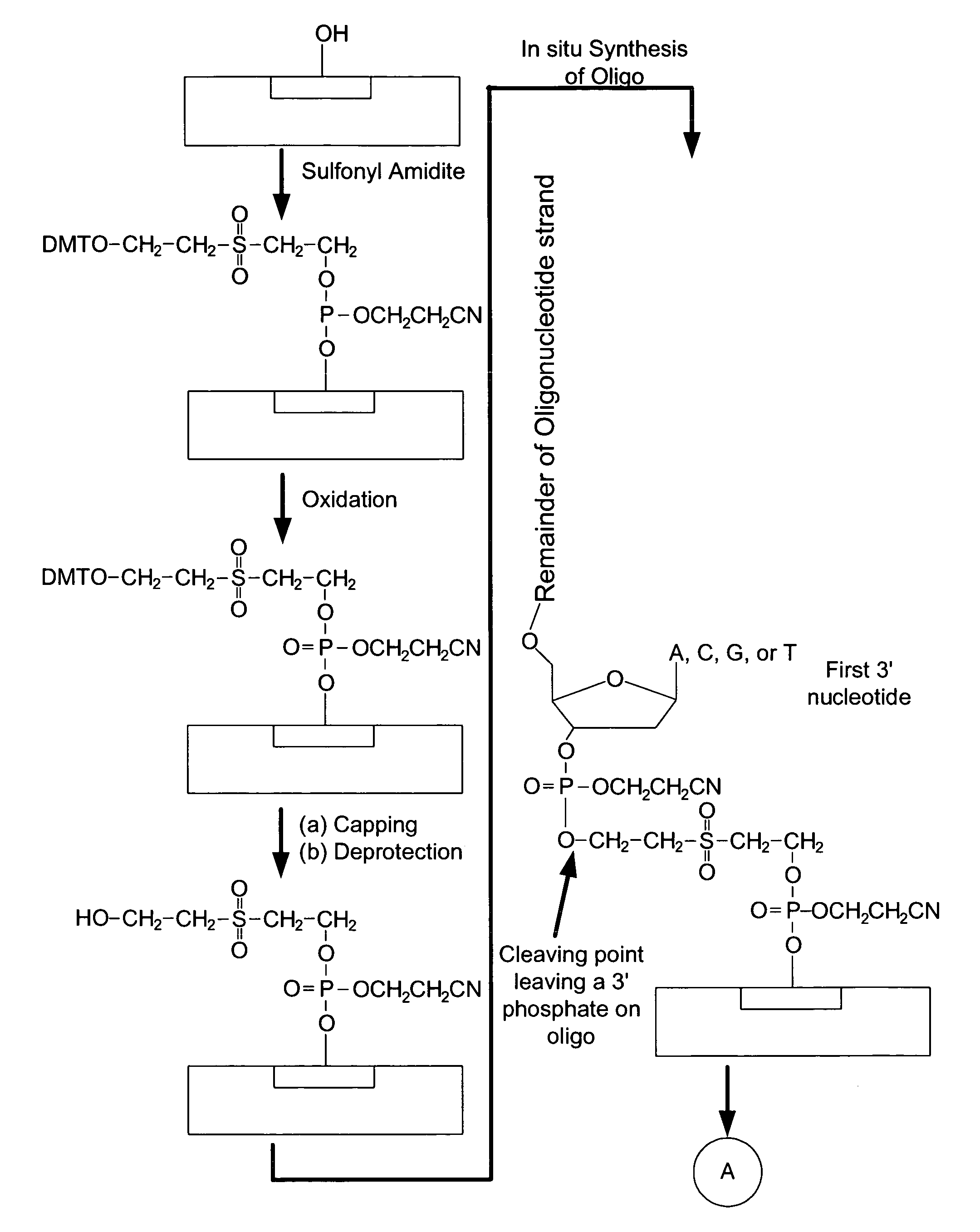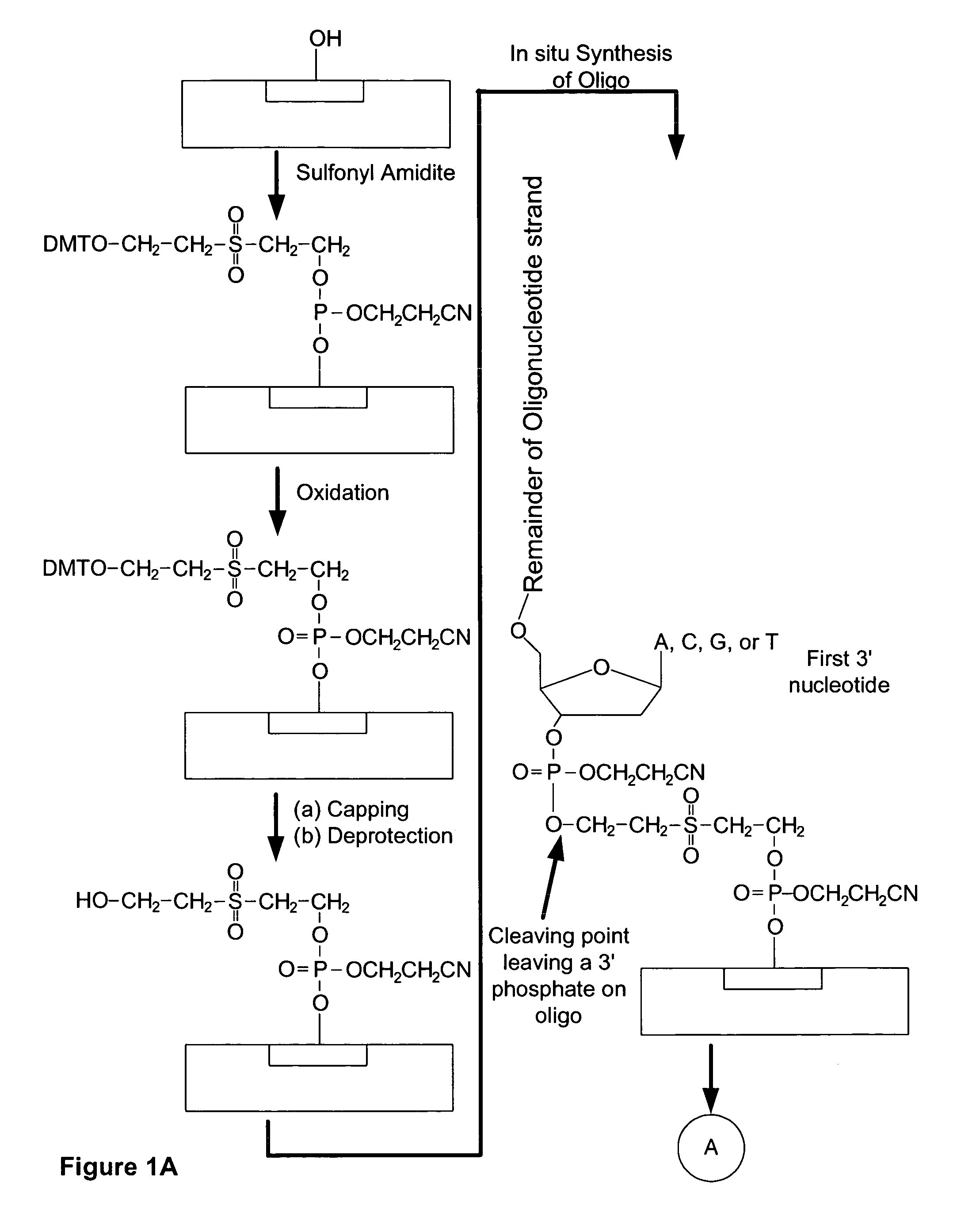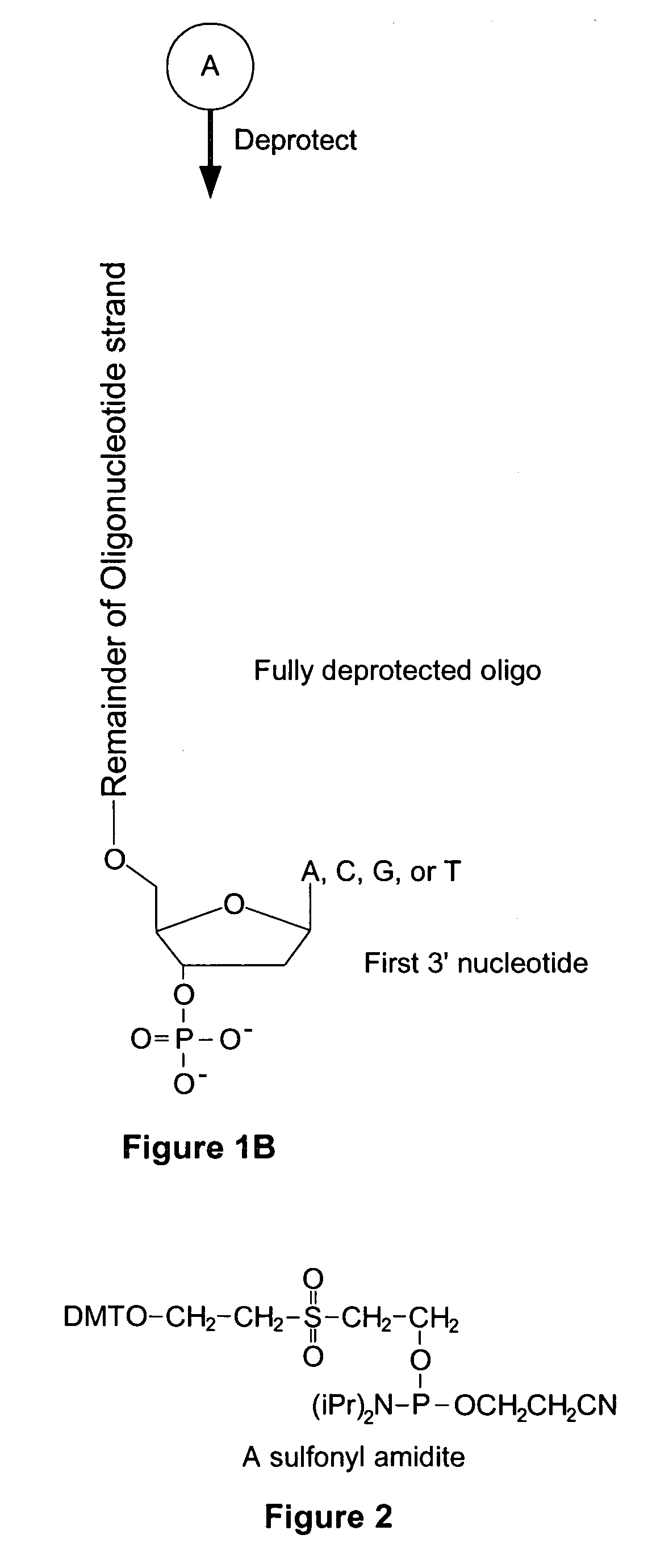Microarray having a base cleavable sulfonyl linker
a technology of sulfonyl linker and microarray, which is applied in the field of microarrays, can solve the problems of limiting the use of such oligonucleotides, the reaction conditions require a relatively long period of time, and the yield is relatively low
- Summary
- Abstract
- Description
- Claims
- Application Information
AI Technical Summary
Benefits of technology
Problems solved by technology
Method used
Image
Examples
example 1
[0177]In this example, a CombiMatrix CustomArray™ 12k microarray was used to synthesize DNA attached to the microarray through a 10-T spacer and a base-cleavable sulfonyl linker. The microarray had approximately 12,000 platinum electrodes on a solid surface having a porous reaction layer. Each electrode was electronically addressable via computer control. The DNA was electrochemically synthesized in situ onto known locations associated with the electrodes on the microarray. The known locations were on and within a porous reaction layer over the electrodes. The porous reaction layer was composed of sucrose. The electrochemical synthesis used phosphoramidite chemistry coupled with electrochemical deblocking of the protecting groups on the synthesized DNA for the addition of each subsequent nucleotide. For bonding of the phosphoramidites, the microarray had reactive hydroxyl groups provided by the sucrose. Electrochemical deblocking involved turning on an electrode to generate acidic c...
example 2
[0181]Thirteen microarrays were prepared according to Example 1 but with some exceptions. First, the microarrays had the same oligonucleotide sequence synthesized on each electrode rather than a pool of oligonucleotides. Additionally, six of the microarrays had the sulfonyl cleavable linker, and seven of the microarrays did not have the sulfonyl cleavable linker.
[0182]After synthesis of the oligonucleotides on the group of six microarrays having the cleavable linker, each of those microarrays was exposed to a concentrated ammonium hydroxide solution for four hours at 65 degrees Celsius to remove the oligonucleotides. The oligonucleotides from each microarray were recovered and amplified using PCR. The oligonucleotide recovery was quantified using quantitative PCR, which used SYBR I as the fluorescent intercalating dye. The fluorescence intensity (FI) was monitored during PCR and plotted against the number of PCR cycles. The FI for each reaction was normalized to the highest FI value...
example 3
[0184]In this example, three different electrode microarrays were synthesized with each having different oligonucleotides ranging from 66 to 80 base pairs. Each microarray was prepared as in Example 1 except for the different oligonucleotides. After synthesis, the microarrays were exposed to concentrated ammonium hydroxide solution for four hours at 65 degrees Celsius to remove the oligonucleotides. The oligonucleotides from each microarray were recovered. The recovered oligonucleotides were amplified using PCR. The amplified oligonucleotides were subjected to gel electrophoresis. The gel was a 20% polyacrylamide gel. The electrophoresis conditions were 200 volts for 90 minutes. The expected PCR product was 66 to 80 base pairs. FIG. 3 shows an image of the electrophoresis gel. Oligonucleotides 321 / 322 were from the first microarray. Oligonucleotides 323 / 324 were from the second microarray. Oligonucleotides 325 / 326 were from the third microarray. The lanes having a positive sign are ...
PUM
| Property | Measurement | Unit |
|---|---|---|
| molecular weight | aaaaa | aaaaa |
| temperature | aaaaa | aaaaa |
| temperature | aaaaa | aaaaa |
Abstract
Description
Claims
Application Information
 Login to View More
Login to View More - R&D
- Intellectual Property
- Life Sciences
- Materials
- Tech Scout
- Unparalleled Data Quality
- Higher Quality Content
- 60% Fewer Hallucinations
Browse by: Latest US Patents, China's latest patents, Technical Efficacy Thesaurus, Application Domain, Technology Topic, Popular Technical Reports.
© 2025 PatSnap. All rights reserved.Legal|Privacy policy|Modern Slavery Act Transparency Statement|Sitemap|About US| Contact US: help@patsnap.com



